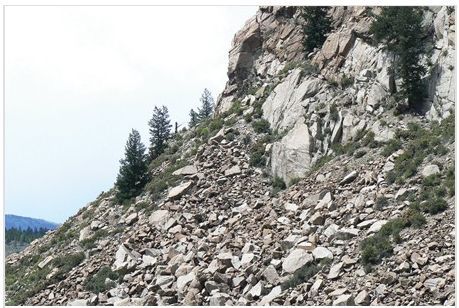John Murray was an oceanographer who sailed on the HMS Challenger between 1872 and 1876 and he
completed the following
a. Edited 50 volumes that resulted from the HMS Challenger expedition
b. Used satellites to pinpoint his position along his expedition
c. Discovered deep sea vents
d. Provide evidence of chemosynthesis
ANS: A
Sir John Murray was a distinguished oceanographer who edited 50 volumes from the HMS Challenger
expedition that occurred from 1972- 1976, well before the discovery of plate tectonics, hydrothermal
vents, chemosynthesis and satellite technology. Information can be found in the section Insights to a
National Geographic Explorer.
You might also like to view...
Which of the following surface environments is the most likely site for deposits in this photograph?

A) Steep mountain front
B) River channel
C) Sand dunes
D) Beach
E) Lake
The greater strength of jet stream winds during winter is due to:
A) greater horizontal temperature contrasts. B) greater air density. C) warmer temperatures at high altitudes. D) stronger Coriolis effect. E) lower humidity.
What is the name of the simplest aromatic carboxylic acid?
A) benzenoic acid B) benzoic acid C) benzylic acid D) toluic acid
Who of the following is thought to be the first Viking to have seen what is now called Newfoundland?
A) Erik Thorvaldson B) Bjarni Herjolfsson C) Leif Eriksson D) Thor Heyerdahl E) Prince Henry the Navigator